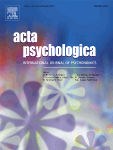- A
- A
- A
- ABC
- ABC
- ABC
- А
- А
- А
- А
- А
- HSE University
- Faculties
- Faculty of Social Sciences
- School of Psychology
- News
- Parallel averaging of size is possible but range-limited: A reply to Marchant, Simons, and De Fockert – New publication in Acta Psychologica
-
Education
-
The School
- About
-
Laboratories
-
- The Scientific-Educational Laboratory of Ability Psychology
- Center for Sociocultural Research
- International Laboratory of Positive Psychology of Personality and Motivation
- Laboratory for Cognitive Research
- Cognitive Psychophysiology Laboratory
- Vision Modelling Laboratory
- Laboratory for the Neurobiological Foundations of Cognitive Development
-
- Partners
- Staff Members
- International Cooperation
Phone: +7 (495) 772-95-90 *15366
Email: dekpsy@hse.ru
Address: 101000, Moscow, Armyanskiy per. 4, c2
Address for correspondence: 20 Myasnitskaya Ulitsa Moscow 101000 (School of Psychology)
In press
Popyvanova A., Pomelova E., Bredikhin D. et al.
IEEE, 2024.
Zaidi S. G., Orazmukhametova L., Zahra S. K. et al.
TPM - Testing, Psychometrics, Methodology in Applied Psychology. 2025. Vol. 32. No. S8. P. 2025-2035.
Tunkevichus O., Bagrationi K.
In bk.: The Proceedings of the 20th European Conference on Innovation and Entrepreneurship. Vol. 20. Iss. 1. Academic Conferences International Limited, 2025. P. 759-766.
Ivanova M., Germanova K., Petelin D. et al.
Biorxiv. 005140. Cold Spring Harbor Laboratory, 2024
The School promotes cutting-edge research, multidisciplinary studies, education in English. We are increasing the number of courses in English all the time and have started two English-speaking Master’s Programs. Our researchers have access to Eye trackers, TMS, multi-channel EEG, MEG and fMRI techniques.
The School also aims to train psychologists, who can apply their knowledge in the fields of economics, banking, human resources management, organizational development, ecopsychology and team-building.

Parallel averaging of size is possible but range-limited: A reply to Marchant, Simons, and De Fockert – New publication in Acta Psychologica
 Utochkin, I. S., & Tiurina, N. A. (2014). Parallel averaging of size is possible but range-limited: A reply to Marchant, Simons, and De Fockert. Acta Psychologica, 146(0), 7–18. doi: 10.1016/j.actpsy.2013.11.012
Utochkin, I. S., & Tiurina, N. A. (2014). Parallel averaging of size is possible but range-limited: A reply to Marchant, Simons, and De Fockert. Acta Psychologica, 146(0), 7–18. doi: 10.1016/j.actpsy.2013.11.012Abstract
In their recent paper, Marchant, Simons, and De Fockert (2013) claimed that the ability to average between multiple items of different sizes is limited by small samples of arbitrarily attended members of a set. This claim is based on a finding that observers are good at representing the average when an ensemble includes only two sizes distributed among all items (regular sets), but their performance gets worse when the number of sizes increases with the number of items (irregular sets). We argue that an important factor not considered by Marchant et al. (2013) is the range of size variation that was much bigger in their irregular sets. We manipulated this factor across our experiments and found almost the same efficiency of averaging for both regular and irregular sets when the range was stabilized. Moreover, highly regular sets consisting only of small and large items (two-peaks distributions) were averaged with greater error than sets with small, large, and intermediate items, suggesting a segmentation threshold determining whether all variable items are perceived as a single ensemble or distinct subsets. Our results demonstrate that averaging can actually be parallel but the visual system has some difficulties with it when some items differ too much from others.
- About
- About
- Key Figures & Facts
- Sustainability at HSE University
- Faculties & Departments
- International Partnerships
- Faculty & Staff
- HSE Buildings
- HSE University for Persons with Disabilities
- Public Enquiries
- Studies
- Admissions
- Programme Catalogue
- Undergraduate
- Graduate
- Exchange Programmes
- Summer Schools
- Semester in Moscow
- Business Internship
- © HSE University 1993–2025 Contacts Copyright Privacy Policy Site Map
- Edit


